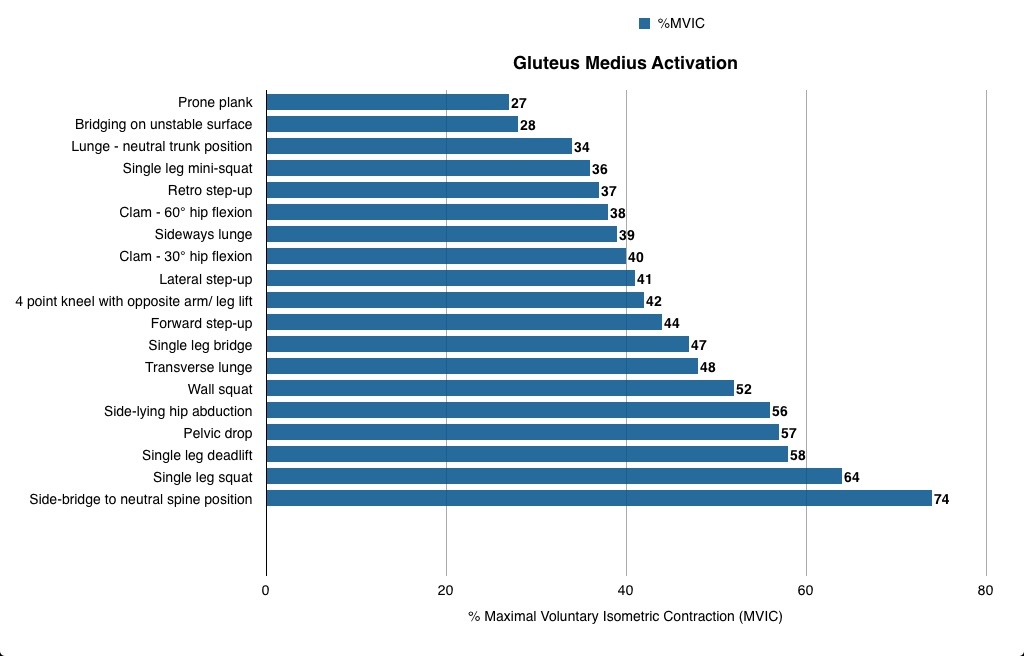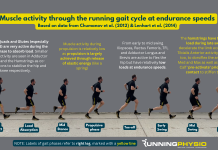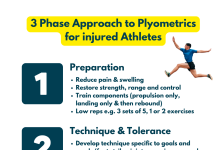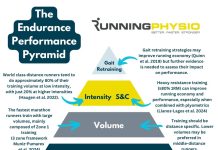Our articles are not designed to replace medical advice. If you have an injury we recommend seeing a qualified health professional. To book an appointment with Tom Goom (AKA ‘The Running Physio’) visit our clinic page. We offer both in-person assessments and online consultations.
Our first article on glutes rehab remains by far our most popular post to date on RunningPhysio. It seems many runners are wondering how to strengthen these important muscles and so I decided to write a follow-up piece based on some very recent research…
Reiman et al. (2012) completed a systematic review of the literature examining Gluteus Maximus and Gluteus Medius activation during rehab exercises. A systematic review is considered a high level of research evidence and is often used to pool data from a number of studies to aid in making useful conclusions.
The authors completed an extensive literature search of articles produced between 1966 and 2010 and found 10 articles that met their inclusion criteria. 6 of these were on Gluteus Maximus (GMax) and 4 on Gluteus Medius (GMed). They examined the data produced by each study and presented the average muscle activation of a variety of exercises, expressed as a percentage of maximum voluntary isometric contraction (%MVIC);
Their results raise a few notable points. Firstly the prone plank exercise achieves the lowest GMax and GMed activation which suggests its role as a strengthening exericse may be limited. Secondly, a number of exercises appear to work both GMax and GMed which could be beneficial as they are thought to work together as ‘synergists’ to provide movement and stability. Single leg squat, single-leg deadlift, wall squat and forward step-up all achieve at least moderate activation of both GMax and GMed. You might also notice some of the results differ from our previous piece – this is because Boren et al. (2011) wasn’t included in the study (probably as it was published after the literature search had been completed) and we used a lot of data from their research. That said there is some agreement between the work of Boren et al. and Reiman et al. both found high levels of GMax and GMed activation with single leg squat and reported similar results for activating of GMed with side-lying abduction, pelvic drop and single-leg deadlift.
Conclusions
So what can we take from the growing body of research on glutes activation? Well, hopefully, we now have more guidance in terms of exercise selection and progression. People with very weak glutes might benefit from starting with lower %MVIC exercises and gradually progressing while those with a stronger baseline might need to start with moderate to high %MVIC to achieve strength changes. Reiman et al. divide the exercises into 4 groups low %MVIC (0-20%), moderate (21-40%), high (41-60%) and very high-level activation (more than 60%). They point to the work of Ayotte et al. (2007) who claim strength changes can be gained with %MVIC in excess of 40%. It should be noted however that Boren et al. suggest that 70% of MVIC is needed to improve strength. If that is the case then only 1 exercise on each muscle would actually create the level of activation needed! This highlights an issue with this work – there needs to be translation of %MVIC results into strength gains and functional or symptomatic improvement for us to know the true relevance of this review. I’d also have liked to have seen some analysis of the research Reiman et al. included rather than simply replicating the results. They haven’t really discussed the quality of the studies they included or any methodological limitations.
Practical application
From the research findings, a good programme for runners wanting to target GMed would be starting with single-leg mini-squat, side-lying abduction and pelvic drops and progressing to single leg deadlift, single-leg squat and side-lying bridge to neutral. For advanced work, you could add leg weight to side-lying abduction or combine side plank with upper leg abduction. This set of exercises would start with at least moderate GMed activation and progress to in excess of 70% MVIC. It would contain both functional weight-bearing exercises that are a closer fit to the activity of running, and non-weight-bearing activities like side-lying abduction which has been shown to activate GMed without increasing unwanted activity in TFL and anterior hip flexors (McBeth et al. 2012) and has been used successfully to rehab runners with ITBS (Fredericson et al. 2000).
Runners wanting to improve GMax could start with single leg bridge, lunge with neutral trunk and single-leg mini-squat and progress to single leg squat, single leg deadlift and forward step up. All of these exercises are ‘closed chain’ single-leg activities where the GMax provides power to extend the hip but also works to help stabilise the hip and pelvis. As a result, they are fairly functional for runners as GMax has a similar role during running.
Final thoughts: there are limitations of the research and its application to runners – this has been discussed in our earlier glutes article. The largest issue is likely to be that all studies were done on healthy individuals and few are specific to runners. Despite this, the research offers some guidance on ways to gain activation of GMed and GMax to help us decide which exercises to choose. A big issue not to be forgotten is that it’s not just what exercises you do but how you do them. Exercises taught under scientific conditions may not be practised as well by people at home or in the gym. Shortly we’ll be adding a video to this post to offer guidance on exercise techniques.












[…] tuomio juoksutyylistäni on saanut minut salillakin keskittymään entistä enemmän harjoituksiin, joiden tarkoituksena on auttaa ensisijaisesti juoksussa. Olen yleisesti ollut kohtalaisen laiska […]
[…] 2 articles on glutes strengthening (available here and here) I thought it was time to try to put together some videos for people. This proved a little more […]
[…] systematic review of EMG studies of Gluteus Medius and Maximus – discussed on RunningPhysio here. It should be noted that many of these exercises would not be appropriate for Gluteal Tendinopathy […]
[…] you have to ask what its role is. The exception with these exercises may be side bridge which research suggests is very effective in recruiting gluteus medius, a muscle vital to hip […]
[…] solutions for iliotibial band (IT band) syndrome / ITBS comes from RunningWritings.com. Glutes rehab – recent research and Gluteus medius – evidence based rehab come from Running-physio.com. There is some overlap […]
[…] have demonstrated high levels of gluteus medius activation in a recent systematic review discussed here. However these exercises can aggravate PFPS so should be added gradually under the guidance of your […]
Do you think that ROM used in the exercise should be taken into account when compairing the activation levels of the muscles during exercise?
I mean that the activation might be easier at certain hip angles than in others ( for example step up vs glute bridge)
When you train to jump higher, you will need to perform
every single rep your absolute maximum. So
listen up and prevent these wise practice mistakes.
There a variety of methods around as well as loads of exercises you’ll be able to do.
Comments are closed.